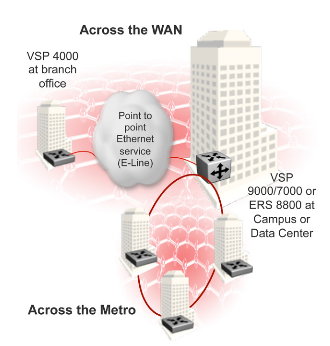At Interop Las Vegas 2013 Avaya was demonstrating their real-world Shortest Path Bridging (SPB) solutions and while interoperating with Spirent, HP and Alcatel-Lucent. Many of you will remember when Avaya was actually the enterprise division of Lucent before the company spun off just over twelve years ago. Randy Cross the company’s director of PLM discussed how there is a rapid move to software in the networking market and SPB is an evolution of MPLS allowing services to be created dynamically on the server where the applications reside or on the switches nearest the users.
This is one of the main benefits of SPB in-fact… It allows customers to simplify network creation and management by requiring service provisioning only at the edge of the network. Avaya thinks the new protocol has a bright future as it saves time, effort, and reduces human error by dynamically building and maintaining the network topology between nodes using intermediate system to intermediate system (IS-IS), a carrier-grade link state protocol. Another benefit lies in its ability to establish a multi-path fabric for traffic distribution and subsequently maximize bandwidth utilization on all paths while being able to execute seamless, sub-second network changes.
The company showed multicast over SPB utilizing its VSP 4000 multiservice edge switch and later demonstrated a sub 200 millisecond failover to me in their booth. I can’t vouch for the actual speed of the failover recovery as I didn’t have a stopwatch but it seemed quite rapid.
Cross told me using this technology and the VSP4000, you can extend the service enabling fabric to the edges of the network supporting a distributed enterprise.
He further explained that they deployed this technology with video surveillance company Pelco and were able to show that SPB provided three times better performance than IP multicast (PDF) without needing to reset the IP cameras frequently.
Another big benefit of this technology is building metro area networks  (pictured) where a data center can have VSP 7000s or VSP 9000s while the VSP 4000 can sit in the basement of a building providing all the benefits of MPLS with security and isolation at a lower cost. This can be as simple as having a few engineers lighting up the metros quickly with fiber to the building and a truck roll to deploy the box he explained.
(pictured) where a data center can have VSP 7000s or VSP 9000s while the VSP 4000 can sit in the basement of a building providing all the benefits of MPLS with security and isolation at a lower cost. This can be as simple as having a few engineers lighting up the metros quickly with fiber to the building and a truck roll to deploy the box he explained.
Other benefits of this solution include simple commands of a few words to allow services to come up quickly between nodes as well as the ability to transfer virtual machines rapidly between the gear of various equipment vendors.
Zeus Kerravala, Principal Analyst, ZK Research had this to say about the news, “These four vendors coming together to showcase SPB interoperability in a public forum such as Interop is significant. In comparison to alternative fabric technologies, SPB offers more vendor support, offers greater scaling and has implementations which are closer to the actual standards – facilitating this type of interoperability testing. Companies that are looking to virtualize data centers and reduce network complexity need to consider an approach based on Shortest Path Bridging.”





